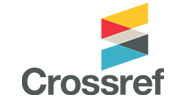1. 서 론
동물의 식이 습성은 중요한 생태적 인자로서 무게, 크기, 서식환경 및 수명과 연관되고 생태 특성을 이해하는 데 필수적 정보를 제공한다 (Price and Hopkins 2015). 섬에서 식하는 야생고양이의 식이를 분류군별에 따라 조사 및 이를 생태지리학적 측면에서 분석함으로써 섬의 생태환경을 예측하거나 (Bonnaud et al. 2011), 여우와 딩고의 식이 습성으로 기후와 강수량, 인위적인 환경에서의 적응성 등을 분석하여 이들의 서식환경을 유추하는 등 식이 습성으로 이들의 서식환경 특성을 파악하는 연구들이 이루어지고 있다 (Doherty et al. 2019;Castañeda et al. 2022). 국내에서도 멧돼지, 수달과 삵의 식이 습성 등에 관한 보고 사례가 있다 (Choi and Yoon 2012;Lee and Lee 2014;Lee et al. 2014b). 서식 분포가 넓은 중형 포유류인 삵과 담비의 식이 습성은 어느 정도 알려져 있으나 이를 통한 서식환경에 대한 고찰 등 연구된 사례는 많지 않다.
삵 (Prionailurus bengalensis)은 식육목에 속하는 육식 동물로 우리나라 내륙 전역에 서식하고 있는 고양잇과 삵 속 (genus)의 야생동물로 멸종위기야생동물 II급과 IUCN 적색목록 LC (최소관심) 등급으로 지정되어 있다 (Choi et al. 2012). 우리나라 외 인도와 동남아시아에서 러시아까지 매우 넓게 분포하는 동물이며 (Lee et al. 2014b), 한국의 생태계에서는 중형 육식 동물이기도 하다 (Taewcharoen et al. 2024). 삵의 서식밀도와 개체군 변화 연구는 아직 적으며 지리산 주변 119 km 도로에서 2년 6개월간 103개체의 로드킬이 발견된 사례를 볼 때 (Choi 2007), 국내에는 아직 적지 않은 수가 서식하고 있으며 도로 또는 인간에 의한 부정적 영향에 크게 노출되어 있을 가능성이 있다 (Choi et al. 2012). 삵은 전국적으로 서식하며 활엽수림 지역 (Lim et al. 2015) 또는 초지 (Choi et al. 2012)를 선호한다는 보고도 있다. 삵 분변에서 나온 잔존물 중 90%가 설치목으로 나와 이들이 주된 먹이임을 알 수 있다 (Lee et al. 2014b;Seryodkin and Burkovskiy 2019). 삵의 한국 내 유전적 다양성은 매우 낮으며 이는 지리적 고립이 원인으로 보인다 (Kim et al. 2010).
담비속 (Martes)은 전 세계적으로 8종이 분포, 유라시아와 북미에 걸쳐 서식하고 있다. 우리나라에서는 담비 한 종이 백두대간을 중심으로 산림지역에 주로 분포하며 (Woo et al. 2015), 담비 역시 삵과 함께 한국의 생태계에서 중형 잡식동물에 속한다 (Taewcharoen et al. 2024). 담비는 멸종 위기야생생물 II급, CITES (Convention on International Trade in Endangered Species of Wild Fauna and Flora) 부속서 3에 포함되어 있으며 지난 40여 년간 동북아시아와 러시아에 서식한 담비 개체 수는 거의 절반으로 감소했다는 보고가 있다 (Oleynikov et al. 2022). 담비는 단독생활이 아닌 1마리에서 6마리의 무리를 구성하고 있으며 평균 2.9마리로 활동을 한다 (Woo et al. 2015). 담비는 과일 등 을 먹지만 소형 동물도 섭취한다. 주로 쉽게 구할 수 있는 먹이를 먹되 과일과 소형 동물이 잘 없는 환경에서는 소형 동물을 최대한 먹기도 한다 (Zhou et al. 2011). Choi et al. (2015)에 의하면 담비 분변의 잔존물을 통하여 소형 동물과 식물을 섭취, 이 외 곤충 (8.5%), 밀랍 (5.0%) 등도 먹는 것으로 보고했다.
삵과 담비를 포함, 야생동물들의 식이 습성 및 서식환경 등을 조사하기 위하여 비침습적인 방법으로 분변의 잔존물인 털을 조사하는 경우가 많다. 털은 자연환경에서 시간 에 따라 서서히 변형을 하고 털의 특징적인 형태가 있어 과학수사, 생태 조사 등에 사용되는 생물학적 재료가 되기도 한다 (Lee et al. 2014a;Tridico et al. 2014). 삵은 육식성, 담비는 전술한 것처럼 과일, 곤충과 고기를 먹는 잡식성이다. 이들은 서로 식이습성이 다르긴 하지만 육식을 하는 공통점이 있으며 두 종 모두 최상위 포식자이기도 하다. 본 연구에서는 서식환경과 식이 습성의 특성을 파악하기 위한 연구로서 분변의 잔존물인 털을 분석하여 어떤 동물 종을 포식하는지를 조사하고자 한다. 털은 크게 내부 구조 메듈라 (medulla)와 외부 구조인 큐티클 스케일 (cuticle scale) 로 구성되어 있고 종별로 특징이 있어 이들의 특징으로 국내에서는 국내 포유류 종 동정 키를 구축한 보고가 있다 (Lee et al. 2014a, 2015;Kim et al. 2022). 분변과 서식환경에서 잔존물로 많이 보이는 털을 종 수준으로 분석하면 삵과 담비의 서식환경과 먹이 등 습성을 파악하는 데 도움이 될 수 있다.
본 연구는 삵과 담비 분변의 털의 형태적 특징을 조사하여 한국의 삵과 담비의 식이 습성과 서식환경을 파악하고 이들의 보전에 도움이 되는 기초자료를 제공하고자 한다.
2. 재료 및 방법
2.1. 분변 채집
본 연구에서의 실험 재료는 삵과 담비의 분변으로 삵 분변과 담비 분변은 2009년 3월에서 2013년 11월까지 지리산 일대 (전남 구례군 광의면 방광리)에서 총 25회에 걸쳐 (계절별 1~2회) 각각 97개, 584개를 채집하였다 (Fig. 1).
2.2. 털 분리 및 전처리
선행연구 방법 (Jędrzejewska and Jeędrzejewski 1998) 에 따라 약 3일간 일반수에 배설물이 풀어지게 한 후 체 (mesh-sieve: 체눈 크기 1 mm)에 걸러 식이물 파편을 잔류 시켰다. 건조기 (WOF-305; Daihan Scientifio, Korea)를 이용하여 50°C에서 48시간 동안 건조한 후 육안으로 털 색깔 및 털 형태별로 분류를 실시했다. 육안으로 분류가 불가능한 털들은 현미경 사용을 위해 재차 일반수로 세척하였다. 그리고 다시 중성세제를 푼 물에 세척 후 증류수로 다시 세척한 뒤 70% 알코올에 넣어 보관했다 (Teerink 1991;Lee et al. 2014a).
2.3. 털 동정
알코올에 보관한 털은 광학현미경 (CX31; Olympus, Tokyo, Japan)과 주사형 전자현미경 (SEM TM-1000; Hitachi, Tokyo, Japan)을 이용하여 각각 털 내부 수질 (medulla)과 외부 큐티클 스케일 (Cuticular scale) 구조를 관찰했다. 이 구조의 형태를 한국 포유류 털 동정 키를 이용하여 분변에서 나온 털을 동정했다 (Lee et al. 2014a, 2015;Kim et al. 2022).
3. 결과 및 고찰
전남 구례군 광의면 방광리 일대에서 채집한 삵 분변 97개와 담비 분변 584개에서 나온 털들을 분석하여 배설물 건중량에서 나온 전체 털 중량 중 해당 종의 털 중량을 비율로 나타냈다 (Table 1).
지리산 일대의 삵 분변에서는 비단털들쥐 (Eothenomys regulus) 39.3%, 다람쥐 (Sciurus vulgaris) 8.9%, 땃쥐 (Crocidura lasiura) 7.1%, 작은 땃쥐 (Crocidura shantungensis) 와 뒤쥐 (Sorex caecutiens)가 5.3%이며 (Fig. 2d-f) 노루/ 고라니 (Capreolus pygargus/Hydropotes inermis)도 5.4%, 멧돼지 (Sus scrofa)가 1.8%의 비율로 나타났다 (Fig. 2a-c and Table 1). 그 외로는 멧토끼 (Lepus coreanus), 두더지 (Mogera robusta), 등줄쥐 (Apodemus agrarius) 등이 있으 며 삵 털도 10.7%를 차지했다.
지리산 방광리 일대의 담비 분변에서는 청설모 (Sciurus vulgaris) 17.9%, 비단털들쥐와 하늘다람쥐 (Pteromys volans) 14.8% (Fig. 2g-i), 노루/고라니 13.8%, 멧돼지 12.8%로 나타났다 (Fig. 2a-c and Table 1).
지리산의 삵과 담비 분변에서는 중대형 동물인 노루/고라니, 멧돼지 털이 검출되었다. 담비의 경우 무리를 지어 협동하며 멧돼지 (아성체)와 고라니, 노루와 같은 중대형 잡식/초식 동물을 사냥할 수 있어 이들 개체군 조절에 영향을 미친다 (Woo et al. 2015;Twining and Mills 2021). 태국, 중국과 러시아에 서식하는 담비는 사슴류를 사냥한 다는 보고도 있어 지리산 일대에 서식하는 담비도 노루/고라니의 포식자임을 확인시켜주고 있다 (Zhou et al. 2011;Pierce et al. 2014). 실제 겨울철 눈 위 발자국 조사를 통해 협동 사냥에 의한 담비의 사냥 성공을 확인한 사례가 보고 되기도 했다 (Woo et al. 2015).
삵의 경우 분변에서 나온 털 중 삵 털이 10%를 차지하였는데 이는 같은 종을 포식한 것보다는 자신의 털을 손질하여 삼킨 것으로 보이며 (Lee et al. 2014b), 담비의 경우 동정 불가한 육식 동물의 털도 나왔다. 털의 메듈라 구조와 큐티클 스케일 구조는 종별로 특징이 있어 종 동정이 가능하다 (Lee et al. 2014a, 2015;Kim et al. 2022). 삵과 담비의 분변에서 나온 털도 메듈라와 큐티클 스케일 구조를 종 동정 키 (Lee et al. 2014a, 2015;Kim et al. 2022)와 대조, 분석하여 이들의 먹이원을 밝혔다. 단, 메듈라 구조는 장 속에서 소화가 되어 분변으로 나올 때는 대부분 소실이 된 경우가 많았고 케라틴질인 큐티클 스케일은 형태가 남아 있어 목 (order) 수준의 동정은 되나 종 수준의 동정은 어려운 경우도 있지만, 이들이 섭식한 먹이원을 목록화할 수 있었다 (Table 1). 하지만 분변 잔존물 털의 큐티클 스케일 혹은 메듈라의 소실이 있으며 종 수준의 동정이 어려운 경우가 생길 수 있다. 이런 경우 털의 DNA를 분석하여 보완한다면 더욱 완벽한 동정이 가능하다. 분변 잔존물의 털이 신선하지 않으면 정확도가 떨어지는 점이 있으나 형태학적 분석과 분자학적 분석이 함께 수반되면 생태학적 측면에서 매우 유용한 분석법으로 활용될 가치가 높다. 실제로 털 케라틴 DNA를 분석하여 동정 키 (key)를 구축하려는 사례가 있기도 하다 (Wu et al. 2008;Bengtsson et al. 2012;Alberts et al. 2017).
지리산에서 삵과 담비는 모두 상위포식자로 중요한 생태적 역할을 하지만, 서로 다른 생태적 지위 (ecological niche)를 가지고 있다. 식이 습성에 있어 삵은 주로 포유류 (설치목, 식충목, 토끼목 및 소목)와 조류를 먹는 육식 동물이며 서식지 내에서 소형 포유류의 개체 수를 조절하는 역할을 한다. 담비는 잡식성으로 식물 열매, 곤충, 포유류 (설치목, 식충목, 토끼목 및 소목) 및 조류 등 다양한 먹이자원을 활용하며, 열매는 먹고 종자를 퍼뜨리는 역할을 하기도 한다. 그리고, 삵과 담비는 노루/고라니와 멧돼지를 먹이로 하고 있으며 이번 조사에서 담비의 분변에서 나온 이들의 털이 삵의 분변에서 나온 털보다 비율이 높게 나왔다. 이는 담비는 그룹으로 사냥을 하기에 (Woo et al. 2015;Lee et al. 2021;Twaining and Mills 2021) 포획의 성공률이 높아 분변에서 더 높은 비율이 관측되었을 가능성이 있다. 일반적으로 육식 포유류는 사냥하기 쉬운 먹이자원에 집중하는 기회주의적 먹이 성향을 보이며 서식환경에 따라 다양한 분류군의 야생동물을 먹이원으로 삼는 것으로 알려져 있다. 붉은 여우 (Vulpes vulpes)와 딩고 (Canis lupus dingo) 의 식이 습성은 서식환경의 기온과 강수량 그리고 기후대에 따라 먹이원에 대하여 유의미한 차이를 나타내는 것으로 보고된 바 있다 (Doherty et al. 2019;Castañeda et al. 2022). 또한, 여우는 인간의 폐기된 음식물 등 인공적인 것도 섭식하기에 얼마나 인공적인 환경에 싸여 있는지도 예측할 수 있다 (Castañeda et al. 2022). 수달 (Lutra lutra)은 서식지 주변의 항만 건설로 인하여 먹이가 제한된 사례도 보고되었다 (Choi and Yoon 2012). 선행연구인 수달, 붉은 여우와 딩고의 연구 보고는 분변에서 발견된 잔존물을 통해 먹이 풍부도와 서식환경을 파악한 것으로, 특정 먹이가 서식환경에 풍부할 경우 해당 먹이의 섭식 비율이 증가하는 경향을 보였다 (Zhou et al. 2011;Choi and Yoon 2012;Doherty et al. 2019;Castañeda et al. 2022). 이러한 야생 동물의 먹이원 분석은 서식환경의 먹이 풍부도, 기후, 강수 등의 환경 조건을 예측하는 데 도움이 되며, 이는 종 보전을 위한 중요한 과학적 근거가 된다.
이번 조사 결과는 호랑이와 표범 등 대형 육식 동물이 사라진 한국의 생태계에서 삵과 담비가 상위 포식자로서 자리매김했음을 보여준다. 이들은 일부 지역에서 ‘유해조수’ 로 지정된 동물들의 개체 수 조절에 기여할 가능성이 있으며, 생태계 내 중형 육식/잡식 동물로서 생물종 다양성 유지에 영향을 미칠 수 있다. 향후 연구에서는 이들의 생태계 내 역할과 기능적 중요성에 대한 장기적이고 광범위한 조사가 필요하며, 이를 통해 야생동물 관리 및 보전 정책 수립에 기여할 수 있을 것으로 기대된다.
적 요
삵 (Prionailurus bengalensis)과 담비 (Martes flavigula) 는 한국의 중형 육식 및 잡식 포유동물이다. 이들의 서식 환경과 식이 습성의 특성을 파악하기 위한 연구로서 분변 잔존물인 털을 비침습적인 방법으로 분석하여 어떠한 동물 종을 주로 포식하는지를 조사하고자 한다. 그 결과, 산림지역의 삵과 담비는 설치목 동물들을 주로 포식하였고 (담비의 경우 과일, 곤충 등 제외) 특이점으로 멧돼지와 노루/고라니도 포식한 것으로 나타났다. 자신들의 몸 크기보다 큰 동물들을 포식하는 것은 호랑이와 표범 등 대형 육식 동물이 없는 생태계에서 조절자 역할을 하는 것으로 볼 수 있다. 본 연구에서는 털을 이용한 비침습적인 방법으로 이들의 서식환경과 식이 습성을 보고하며, 이를 통하여 삵과 담비의 보전 연구에 도움이 되는 기초자료를 제공하고자 한다.

















